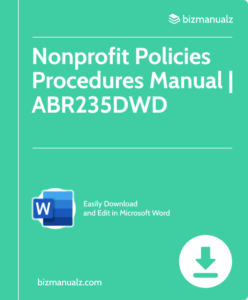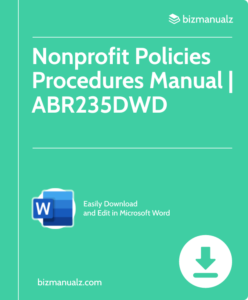What Are Core Nonprofit Processes?

Welcome, reader. Are you a part of a non-profit organization struggling to streamline your processes and maximize your impact? In today’s fast-paced world, it is crucial for non-profits to have efficient and effective core processes. In this article, we will delve into the importance of core non-profit processes and how they can help your organization achieve its goals. What Are Core Nonprofit Processes?
What Are Core Non-Profit Processes?
Non-profit organizations are essential for supporting and promoting various causes and initiatives. In order to effectively fulfill their missions, non-profits rely on a set of core processes that are crucial for their operations.
These processes include fundraising, volunteer management, program development and evaluation, financial management, and marketing and communications. In this section, we will discuss each of these core non-profit processes and their importance in achieving the goals of non-profit organizations.
1. Fundraising
Fundraising is an essential aspect of non-profit organizations. To enhance and enhance the fundraising process, follow these steps:
- Define fundraising goals and objectives.
- Identify target donors and create a donor database.
- Create a compelling case for support.
- Develop a fundraising plan with specific strategies and tactics.
- Implement various fundraising methods such as events, direct mail, online campaigns, and grant writing.
- Regularly track and evaluate fundraising efforts to measure effectiveness.
- Cultivate and maintain donor relationships through personalized communication and recognition.
- Build a strong network of volunteers to support fundraising activities.
To enhance fundraising, consider utilizing technology for donor management, diversifying fundraising methods, and involving board members and staff in fundraising efforts. Remember to adjust strategies based on donor feedback and changing needs.
2. Volunteer Management
Volunteer management is a crucial process for non-profit organizations. Effectively managing volunteers ensures that they are engaged, motivated, and fulfilling their roles. Here are some steps to optimize this process:
- Recruit volunteers: Advertise open positions through various online platforms, social media, and community networks.
- Screen and onboard: Conduct interviews, background checks, and orientation sessions to ensure the suitability and readiness of potential volunteers.
- Provide training: Offer comprehensive training to equip volunteers with the necessary skills and knowledge for their assigned tasks.
- Assign roles: Match volunteers with roles that align with their interests, skills, and availability.
- Communicate effectively: Maintain regular communication channels to provide updates, address concerns, and express gratitude to volunteers.
- Recognize and appreciate: Acknowledge volunteers’ contributions through thank-you notes, events, or awards.
- Evaluate and improve: Collect feedback from volunteers to identify areas for improvement and make necessary adjustments.
By following these steps, non-profit organizations can cultivate a positive volunteer experience and enhance their overall impact in the community.
3. Program Development and Evaluation
Program development and evaluation are crucial processes for non-profit organizations to ensure the effectiveness and impact of their programs.
- Assess Needs: Conduct research and gather data to identify the specific needs and challenges within the target community or population.
- Set Goals and Objectives: Define clear and measurable goals and objectives that align with the organization’s mission and address the identified needs.
- Design Programs: Develop program strategies, activities, and interventions that are evidence-based and tailored to meet the identified needs.
- Implement Programs: Put the designed programs into action by mobilizing resources, recruiting and training staff or volunteers, and executing planned activities.
- Monitor and Evaluate: Continuously collect data and assess program outcomes and impacts to determine if the goals and objectives are being achieved.
- Make Improvements: Based on evaluation findings, identify areas that need improvement and make necessary adjustments to enhance program effectiveness.
By following these steps, non-profit organizations can ensure that their Program Development and Evaluation is done in a systematic and evidence-based manner, leading to positive social change and improved outcomes for the communities they serve.
5. Marketing and Communications
Effective marketing and communications are crucial for non-profit organizations to raise awareness, engage supporters, and achieve their mission. To optimize these core processes, follow these steps:
- Define Goals: Clearly define the objectives for your marketing and communication efforts, such as increasing donations or expanding outreach.
- Target Audience: Identify your target audience and tailor your messaging and channels accordingly.
- Create Compelling Content: Develop engaging and impactful content that resonates with your audience and effectively communicates your organization’s story and impact.
- Utilize Various Channels: Utilize a mix of online and offline channels, such as social media, email marketing, events, and press releases, to reach and engage a broader audience.
- Monitor and Evaluate: Regularly track and analyze your marketing and communication efforts to measure their effectiveness and make necessary adjustments.
To further enhance your marketing and communications, consider leveraging data analytics tools, collaborating with influencers or partners, and implementing feedback mechanisms to ensure continuous improvement. By implementing these steps, non-profit organizations can effectively promote their cause and connect with their stakeholders.
How to Optimize and Improve Core Non-Profit Processes?
In order for a non-profit organization to effectively serve its mission, it must have efficient and effective processes in place. These core processes, such as fundraising, volunteer management, and program implementation, are the backbone of any non-profit. However, they can often become bogged down with inefficiencies and outdated practices.
In this section, we will discuss how non-profits can optimize and improve their core processes by utilizing technology and automation, establishing clear and consistent policies, regularly reviewing and evaluating processes, and fostering collaboration and communication among team members. By implementing these strategies, non-profits can operate more smoothly and ultimately better serve their communities.
2. Establish Clear and Consistent Policies
Establishing clear and consistent policies is crucial for the effective operation of non-profit organizations. Here are steps to establish such policies:
- Identify areas requiring policies, such as financial management, volunteer recruitment, and program implementation.
- Conduct research to understand best practices and legal requirements in each area.
- Develop policy templates or use existing ones as a starting point.
- Customize policies to fit the organization’s specific needs, ensuring clarity and consistency in language and formatting.
- Seek input and feedback from stakeholders, including board members, staff, volunteers, and beneficiaries.
- Implement policies by clearly communicating them to all stakeholders and providing training if necessary.
- Regularly review and update policies to reflect changes in regulations, organizational needs, and lessons learned.
By establishing clear and consistent policies, non-profit organizations can ensure transparency, accountability, and effective decision-making.
3. Regularly Review and Evaluate Processes
Regularly reviewing and evaluating processes is crucial for the success and growth of non-profit organizations. Here are some steps to effectively carry out this essential task:
- Establish evaluation criteria and goals.
- Collect and analyze relevant data and feedback from stakeholders.
- Identify strengths and weaknesses in current processes.
- Make necessary adjustments and improvements based on the findings.
- Regularly monitor and track the progress of implemented changes.
- Document and communicate the results and lessons learned.
- Repeat the review and evaluation process periodically to ensure continuous improvement.
Nonprofit Processes
For the purpose of advancing and supporting different causes and projects, nonprofit organizations are crucial. Non-profits depend on a number of essential core procedures that are essential to their operations in order to successfully carry out their missions.
These procedures include marketing and communications, financial management, program development and evaluation, volunteer management, and fundraising. The significance of each of these fundamental non-profit procedures in accomplishing the objectives of non-profit organizations will be covered in this section.
Frequently Asked Questions

What are Core Non-Profit Processes?
Core Non-Profit Processes refer to the essential activities and procedures that non-profit organizations use to achieve their mission and goals. These processes include everything from fundraising and financial management to program implementation and volunteer management.
What are some examples of Core Non-Profit Processes?
Some examples of Core Non-Profit Processes include strategic planning, budgeting, donor stewardship, volunteer recruitment and training, grant writing, program evaluation, and community outreach. These processes are crucial for the success and sustainability of a non-profit organization.
Why are Core Non-Profit Processes important?
Core Non-Profit Processes are important because they help non-profit organizations operate efficiently and effectively. By following these processes, non-profits can ensure that resources are managed properly, programs are implemented successfully, and overall mission and goals are achieved.
How can non-profit organizations improve their Core Non-Profit Processes?
Non-profit organizations can improve their Core Non-Profit Processes by regularly reviewing and evaluating their current procedures, identifying areas for improvement, and implementing new strategies and technologies. It is also helpful to seek feedback from stakeholders and stay updated on best practices in the non-profit sector.
Do all non-profit organizations have the same Core Non-Profit Processes?
No, not all non-profit organizations have the same Core Non-Profit Processes. The specific processes may vary depending on the size, focus, and structure of the organization. However, the general principles and objectives of these processes remain the same for all non-profits.
Where can I learn more about Core Non-Profit Processes?
You can learn more about Core Non-Profit Processes through various resources, such as non-profit management books, online courses, and workshops. You can also seek guidance from experienced non-profit professionals and consultants who specialize in this topic.

















Leave a Reply